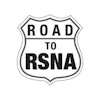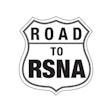Sunday, November 26 | 9:40 a.m.-9:50 a.m. | S1-SSHN01-5 | Room E353B
Attendees in this session will learn about how machine learning using ultrasound and shear wave elastography (SWE) images can improve thyroid nodule diagnosis and treatment strategy.
In his presentation, Chong-Ke Zhao, MD, from Fudan University in Shanghai, China will talk about how machine learning-assisted dual ultrasound modalities can help radiologists better diagnose thyroid nodules, as well as reduce unnecessary fine-needle aspiration biopsy rates.
While TI-RADS is the current standard method in determining thyroid nodule risk, the researchers pointed out that this method is hindered by low diagnostic specificity. Previous studies have explored the potential of machine learning in better risk assessment in this area.
Zhao and colleagues wanted to compare the respective performances of machine learning-assisted visual approaches and radiomics approaches with TI-RADS. They also compared the rates of unnecessary fine-needle aspiration biopsies.
In their multicenter study, the researchers found that the machine-learning approach had the best diagnostic performance of the three, with area under the curve (AUC) values of 0.900 and 0.917 in validation and test datasets, respectively.
However, this further improved after SWE imaging data was added. The machine-learning approach again bested the radiomics and TI-RADS methods after the addition of SWE, with AUC values of 0.951 and 0.953 in the validation and test datasets, respectively.
Finally, the team reported that the machine-learning approach with ultrasound and SWE data reduced the unnecessary fine-needle aspiration biopsy rate from 30% to 4.5% in the validation set, and from 37.7% to 4.7% in the test set.
Find out more about the model by attending this session.

